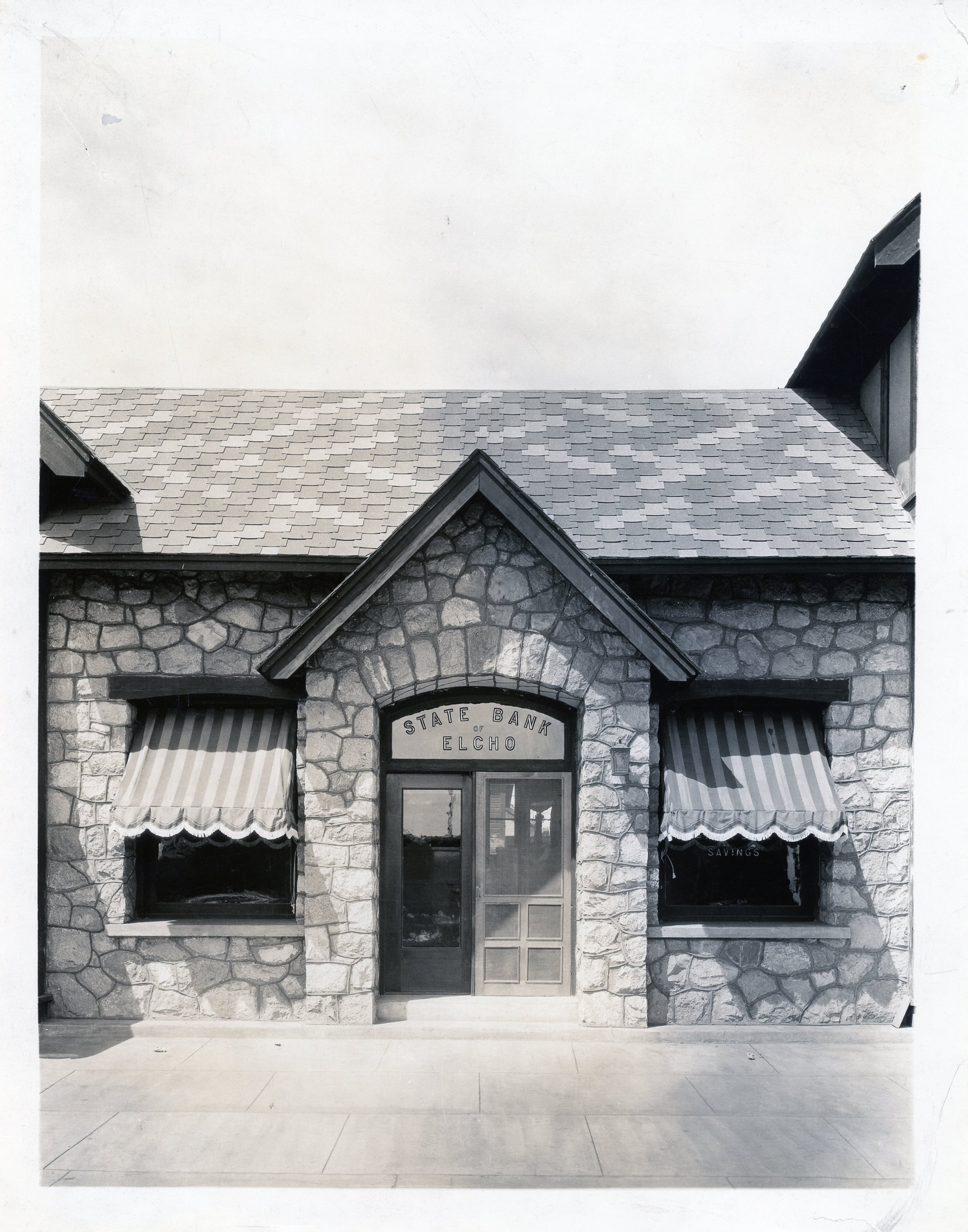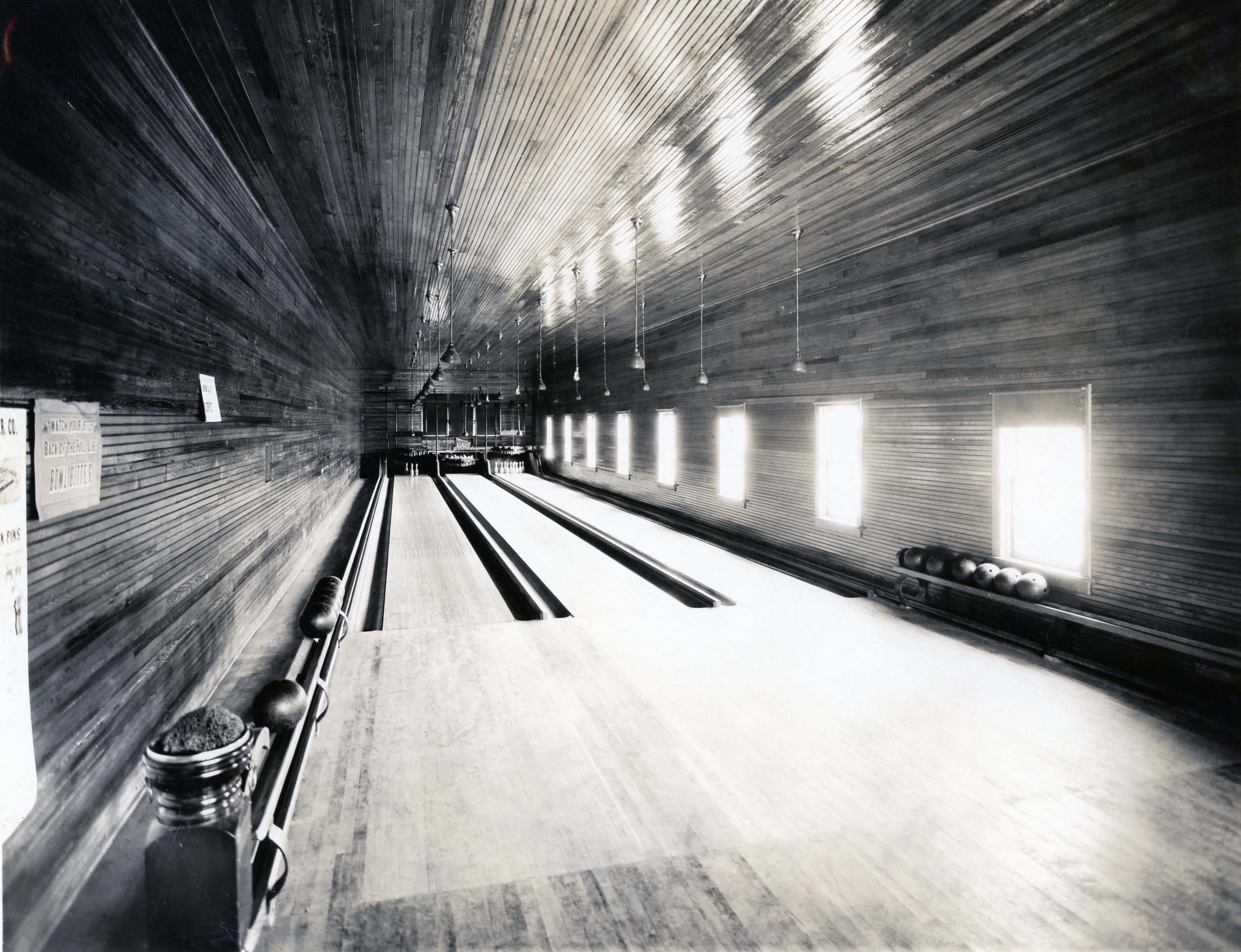Elcho’s Revitalized Business District
By Bear Wheeler
In anticipation of the Grand Opening of the business district, the Antigo Daily Journal published a whole separate section of the paper just for Elcho. The Elcho Historical Society has a surviving copy of this newsprint, but it is in poor condition. The edition sported many pictures of the new buildings, articles, business advertisements, and curious things about Elcho. It really gives the consumer a snapshot of what Elcho was like and the excitement around the new business section. It really gave Elcho all the amenities that you would find in larger cities, this is what really makes this town’s history so special.
One of the articles of the paper spent some time describing the new part of town, and I would like to share it with you here. The Antigo Daily Journal presents…
“On the corner, on the site of the former building, a department store, 60x130 feet, has been built. The aim was to furnish for Elcho and vicinity a modern store with a full line of all stock usually handled in such a store. A.W. Brandner acts as manager of this store.
Realizing the need of a bank near a store of this kind, the quaintly built, but very up-to-date bank was placed next in line, with George Bauer as cashier.



A fine drug store, furnished with the latest in drug store fixtures, is a credit to the town. Roy Germanson attends to this department.
The Olde Muskie Inn, which is modern and one of the finest in this part of the country, has 55 bedrooms built around an open court, 60x32 feet, which gives light to the spacious dining room of the same size. The lobby of the hotel is beautifully finished in brown with Dutch blue in carpet and drapes. Two stairways on opposite sides lead to the rooms. Excellent meals are prepared by a competent chef and tourists are given every consideration. Mrs. W.J. Litzen manages this hotel.
Next in the chain is a three-chair barber shop and bath, which would be a credit to a town twice the size of Elcho. William Estabrook runs this shop and employs Vincent Granger and R.J. Hansen as barbers.
The moving picture house will seat 500 persons. It is arranged with fire exits and a slopping floor. This building will also be used for theatricals.
The suite of two rooms in the same building will be occupied by Dr. A[mos] A. Hoffman, dentist. These rooms are finished in yellow pine.
To insure harmony in architecture, the office of the Chas. W. Fish Lumber Company and the former hardware store have been newly sided and novelty roofing has been put on which adds much to the appearance.
The depot is 18x70 feet and lies on the site of the old one. It is of stucco and wood and is a very attractive depot, which includes comfortable and pleasant working quarters as well as beauty. It contains an office in the center with men’s and women’s waiting rooms on either side and 300-foot cement platform. This will eliminate the former inconvenience experienced boarding a train.
The old boarding house was moved to a position on a back street (Minola St.) to make way for the new Fish Co. club house which is one of the three most attractive of its kind in the state. This building has a width of 100 feet, with depth to the alley of 130 feet. From the wide veranda on the east front one may enter by one of a cluster of doors direct to the lounge or one may enter the reception hall and club room from the same porch.





The lounge is 100 feet long, with large fireplaces at either end, and is lighted with twelve clusters of candles. There are five carpeted centers in all, each with its center table and great chairs, including in the end centers facing the two fireplaces. The south end of the lounge contains a piano. Off the lounge are two sets of doors, one leading to the north front hall and the other to the south hall, or ladies’ parlor. Here are convenient davenports, piano, chairs, dressing tables, and wash rooms. Entering the north room from the parlor we find pool and billiard tables and a soft drink parlor with its accompanying tables. To the west and running north and south are the long smoking room and three regulation bowling alleys. The basement contains the power plant, water plant, and shower baths for men and women. The building is the completion of a desire of Mr. Fish for a better community feeling and he has made definite his idea that the building is not an exclusive club, but one in which all members are welcome to enjoy the comforts provided and the pleasures available.”
The great fire of February 18, 1923, was devastating, but yet no lives were lost. It provided a blessing to modernize the business district with plumbing and lighting for all night. The lights were provided for because of the talents of Otto Altman as chief engineer and Fred Warden, the night engineer, of the new dynamo that generated the electricity from the mill. This is also when Elcho got street lights.
There is a newspaper article out there published in 1924 I believe, that speaks of Elcho as the “Most Picturesque Town in Wisconsin”. The passenger train would come through, and when they did not have to stop in Elcho the railroad attendant would alert the passengers that they were to be going through Elcho and to have a look. The writer had said that people got up and went to the appropriate side to look out the window at the most beautiful town in Wisconsin.
